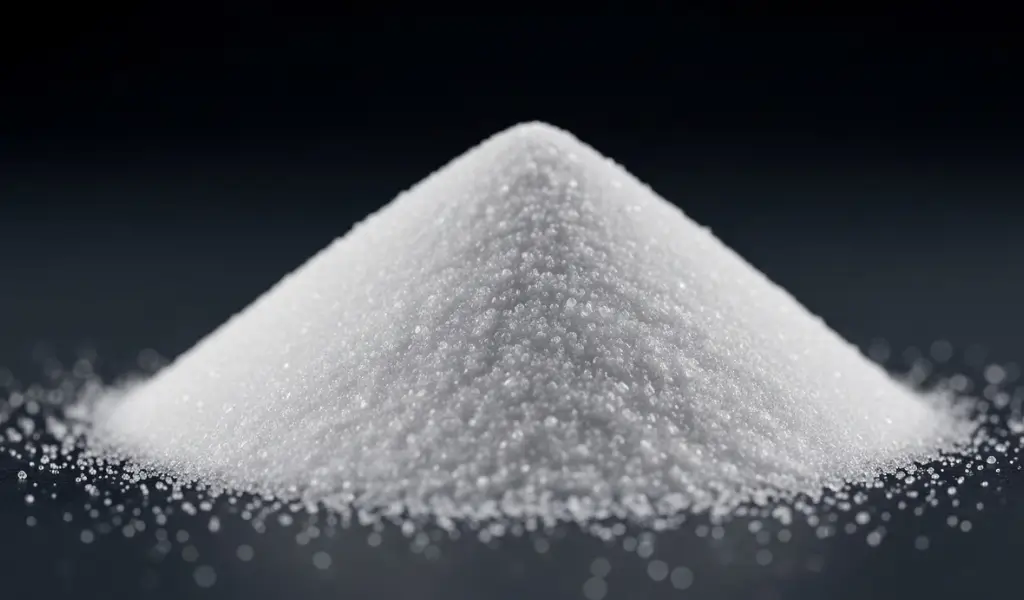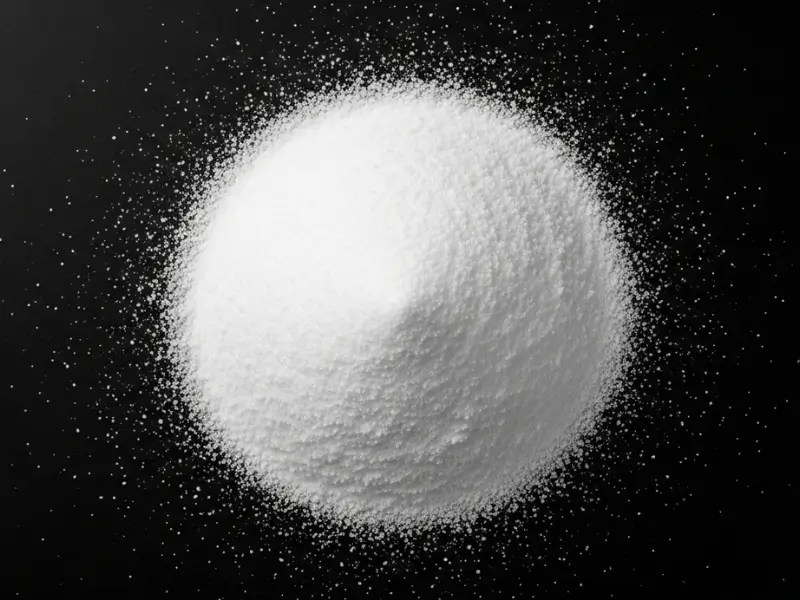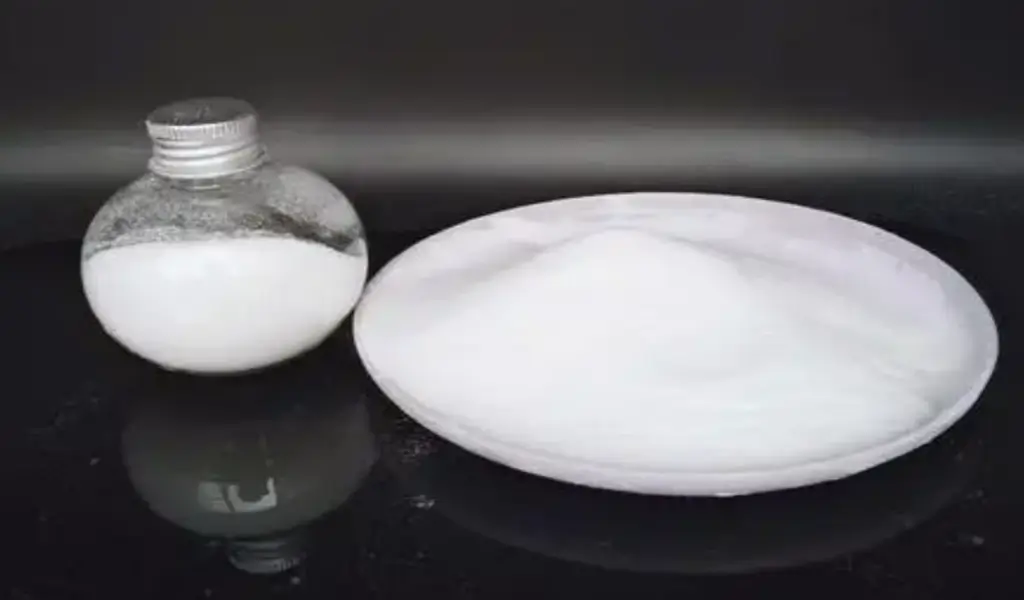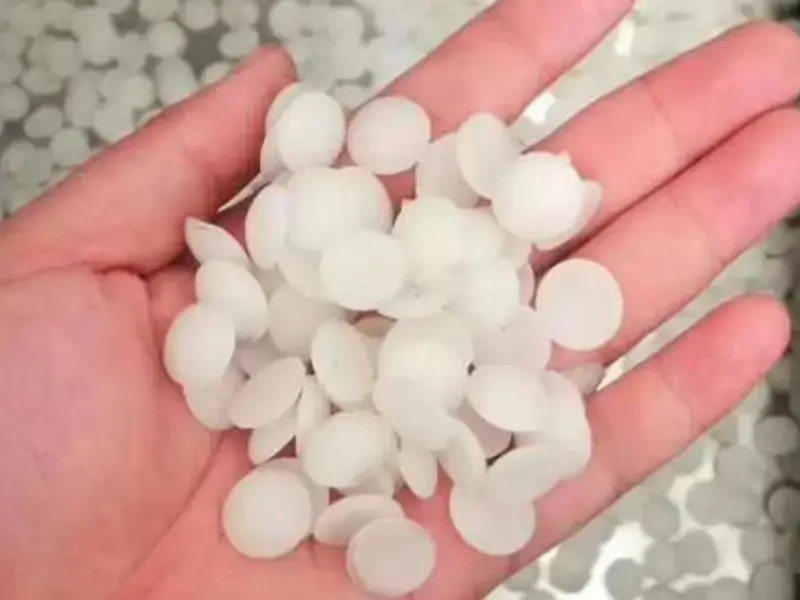CPE performs better in harsh conditions due to its superior weather, chemical, and heat resistance, while PVC degrades faster under UV, high temperature, and aggressive environments.
1. Introduction to CPE and PVC
CPE, or Chlorinated Polyethylene, and PVC, or Polyvinyl Chloride, are both widely used materials in various industries. But here’s the kicker: while they share some applications, their properties often lead to vastly different performance outcomes in real-world scenarios. Understanding the key differences between CPE and PVC materials—especially for cable and hose applications—is critical for manufacturers.
CPE is known for its exceptional flexibility and durability, making it suitable for applications that require resilience under stress. Conversely, PVC is recognizable for its low cost and good strength, yet it often lacks the flexibility found in CPE. Moreover, the performance of each material can vary significantly under different environmental conditions.
The relevance of this comparison extends beyond mere properties; it affects manufacturing processes, product lifespan, and even environmental impact. As manufacturers continue to seek materials that not only meet performance standards but also align with sustainability goals, understanding these materials better becomes increasingly important.

The following sections will explore the details of flexibility, cost analysis, and heat aging in both CPE and PVC, helping decision-makers navigate the complexities of material choices effectively.
| Property | CPE | PVC |
|---|---|---|
| Flexibility | High | Moderate |
| Cost | Higher initial | Lower initial |
| Heat aging stability | Excellent | Moderate |
2. Understanding Flexibility in Materials
What does flexibility mean in the context of materials like CPE and PVC? Flexibility refers to the ability of a material to bend without breaking, which is critical in applications where stress and movement are involved. Ready for the good part? Flexibility not only affects the performance of the product but also its longevity, maintenance requirements, and overall usability.
CPE boasts a remarkable elongation at break, delivering superior bending performance—a key advantage in cpe vs pvc flexibility comparisons allowing it to stretch and absorb shocks better than PVC. This characteristic makes CPE particularly suitable for applications such as hoses and cables that undergo frequent bending or twisting. On the other hand, PVC, while durable, has a more rigid structure that can lead to cracking under extreme stress, limiting its application in areas requiring flexibility.
Real-world examples highlight these differences. For instance, in the automotive sector, flexible CPE components are preferred for wiring insulation, supporting various shapes and movements without damage. In contrast, PVC is often optimized for fixed installations where flexibility is less of a concern, such as in certain structural applications.
In terms of overall performance, flexibility plays a crucial role in deciding which material will best meet specific application needs, especially in diverse and demanding environments.
| Material | Flexibility Level | Common Applications |
|---|---|---|
| CPE | High | Electrical insulation, hoses |
| PVC | Moderate | Structural elements, pipes |
3. Cost Analysis of CPE vs PVC
Cost is a significant factor in choosing materials for manufacturing. So, how do CPE and PVC compare financially? While CPE typically comes with a higher initial cost, its long-term cost benefits often outweigh that early investment, whereas PVC’s lower initial cost may be a short-term savings ,manufacturers must consider the long-term benefits and savings associated with using more resilient materials. This is where the story gets interesting—understanding the true cost involves evaluating not just the price tag, but also the potential expenses related to maintenance, durability, and performance over time.
Initially, PVC may seem like the more economical choice due to its lower price point. However, this short-term saving can be misleading. Over time, CPE’s superior durability and chemical resistance can lead to lower replacement costs and reduced downtime. Consider a case study where a manufacturer switched from PVC to CPE for its electrical wiring needs. This change resulted in fewer failures and significantly reduced maintenance costs, thus justifying the higher initial investment.
Additionally, industries focused on sustainability may find themselves investing more in CPE as it often demonstrates a longer lifespan and reduced environmental impact. This blend of durability and lower lifecycle costs positions CPE as a better investment despite its higher upfront price.
| Aspect | CPE | PVC |
|---|---|---|
| Initial Cost | High | Low |
| Long-Term Costs | Lower (due to durability) | Higher over time |
| Maintenance Cost | Minimal | Potentially High |
4. Heat Aging and Its Importance
Ready for an essential topic? Heat aging is a critical factor in determining the longevity and reliability of materials like CPE and PVC under high-temperature conditions. Heat aging refers to the process where materials are exposed to elevated temperatures for prolonged periods, affecting their mechanical properties over time.
In heat aging tests, CPE shows superior stability—clearly outperforming PVC, which performs poorly in pvc vs cpe heat resistance comparisons. On the other hand, PVC can become brittle and lose its structural integrity when subjected to heat aging, which can severely impact its performance in applications such as electrical insulation or hoses.
To illustrate this point, let’s look at a comparison within the automotive industry. In environments where high temperatures are commonplace, utilizing CPE in hoses or seals ensures that components maintain their functionality and do not fail. In contrast, PVC alternatives might require frequent replacement or lead to unexpected failures, indicating a clear advantage for CPE in heat-sensitive applications.
In summary, heat aging emerges as an essential consideration when selecting materials, especially for applications subjected to high temperatures.
| Material | Heat Aging Resistance | Performance in High Temps |
|---|---|---|
| CPE | Excellent | Maintains flexibility |
| PVC | Moderate | Becomes brittle |
5. Applications in the Industry
When it comes to practical applications, both CPE and PVC have carved niches in various industries. What’s the real story? The choice between CPE and PVC often depends primarily on the specific requirements of the application at hand.
In the electrical industry, cpe material for outdoor cable insulation is favored—especially when comparing pvc vs cpe applications for outdoor environments.This ensures that electrical wires can bend without cracking, maintaining functionality over time. Conversely, PVC is typically utilized for rigid conduit systems and other fixed applications where flexibility is less critical.
In plumbing, CPE is favored for hoses that need to withstand pressures and bending, while PVC is frequently used for piping systems where straight runs are commonplace. This difference highlights how manufacturers match materials to specific demands to optimize performance and durability.
Real-world implications are significant. For example, an industrial facility using CPE for chemical transfer hoses achieved remarkable results in terms of safety and performance, showcasing how understanding these materials can lead to better choices and outcomes.
| Application | Preferred Material | Reason for Preference |
|---|---|---|
| Electrical Insulation | CPE | Flexibility and heat resistance |
| Plumbing | PVC | Cost-effectiveness and rigidity |
| Chemical Transfer | CPE | Excellent chemical resistance |
6. Performance in Extreme Conditions
What happens when CPE and PVC face extreme conditions? Understanding how each material behaves under harsh environments is crucial for selecting the right one for critical applications.
CPE is known for its resilience in extreme temperatures, ranging from frigid environments to high-heat scenarios. Its flexibility allows it to adapt without cracking, making it suitable for outdoor applications and situations where extreme stress is expected. For example, CPE hoses used in refrigeration applications maintain performance and remain flexible even at sub-zero temperatures.
In contrast, PVC is not as adaptable in extreme circumstances. While it is strong and economical, PVC tends to lose flexibility and can become fragile in cold weather, which can lead to cracking and failure. In one case, a manufacturer implementing PVC in a cold environment faced numerous product failures, prompting a costly redesign that transitioned to robust CPE materials.
Evaluating performance in extreme conditions is vital for manufacturers targeting reliability and safety, and choosing materials wisely can mean the difference between success and costly down-time.
| Condition | CPE Performance | PVC Performance |
|---|---|---|
| High Temperatures | Excellent | Reduced flexibility |
| Low Temperatures | Maintains integrity | Brittle and cracks |
| Chemical Exposure | High resistance | Moderate resistance |
7. Chemical Resistance Comparison
Ready for a deep dive into chemical resistance? The ability of CPE and PVC to withstand exposure to different chemicals is an essential factor in many industry applications.
Solvent resistance of CPE vs PVC clearly favors CPE, especially against oils, acids, and solvents.Industries like automotive and manufacturing frequently use CPE due to its resilience against various substances, reducing the risk of component failure.
Conversely, PVC has limitations regarding chemical exposure. While it is resistant to some chemicals, it can degrade when exposed to harsh substances, making it less reliable in critical applications. A clear example can be seen in industrial applications involving harsh solvents where manufacturers have found CPE to be a more dependable choice over PVC.
Understanding the implications of chemical resistance is crucial for manufacturers, as selecting the right material can prevent costly failures and ensure the longevity of their products.
| Chemical | CPE Resistance | PVC Resistance |
|---|---|---|
| Oils | Excellent | Moderate |
| Acids | Strong | Limited |
| Solvents | High | Variable |
8. Environmental Considerations
With growing concerns about sustainability, it’s essential to examine the environmental impact of materials like CPE and PVC. What’s the real story? The choice between these two materials can significantly affect environmental footprints.
CPE is often preferred for its recyclability and lower emissions—a true example of cpe sustainability, while pvc environmental issues still cause concern.As industries strive to meet sustainability goals, CPE stands out as a greener alternative. Manufacturers are increasingly aware that using sustainable materials can enhance their market competitiveness and comply with regulatory pressures regarding environmental impacts.
On the other hand, PVC’s production processes can lead to higher emissions and environmental concerns. While it is more affordable upfront, the longer-term environmental costs associated with PVC can be detrimental to a company’s sustainability image.
By adopting CPE, manufacturers not only contribute to a healthier planet but also position themselves as leaders in eco-friendly practices, thereby attracting consumers who prioritize sustainability in their purchasing decisions.
| Material | Environmental Impact | Recyclability |
|---|---|---|
| CPE | Lower emissions | High |
| PVC | Higher emissions | Limited |
9. Safety Standards and Compliance
As manufacturers work with materials, safety standards and regulatory compliance play crucial roles in deciding which to choose. This is where it gets interesting—understanding these regulations can help avoid costly mistakes.
CPE and PVC are both subject to ISO standards for CPE and PVC, but CPE often meets higher benchmarks in electrical insulation.For example, CPE often meets stricter electrical safety requirements due to its superior insulation properties. Meanwhile, PVC, although standard for various applications, has faced scrutiny in industries where environmental and safety regulations are tightening.
Many manufacturers find that ensuring compliance with safety standards enhances their credibility and trustworthiness in the market. Thus, investing in materials that readily meet these regulations can translate into improved product acceptance and enhanced marketability.
Furthermore, rigorously testing materials in compliance with industry standards allows manufacturers to safeguard end-users, building a reputation for quality and safety. It is imperative for manufacturers to prioritize safety and compliance when selecting materials.
| Standard | CPE Compliance | PVC Compliance |
|---|---|---|
| ASTM | Meets standards | Varies by application |
| ISO | High compliance | Basic compliance |
| Electrical Safety | Superior rating | Moderate rating |
10. Consumer Preferences and Market Trends
Understanding consumer preferences offers valuable insights into market trends regarding CPE and PVC. As customers continue to become more educated about materials, their preferences begin to shape industry standards and practices. But here’s the kicker: what consumers prefer directly impacts what manufacturers choose to produce.
As eco-consciousness grows, cpe material demand rises—especially in the pvc vs cpe market, where CPE often prevails. CPE often aligns with these values, leading to higher consumer preference in various applications such as packaging, automotive parts, and construction materials. In the past few years, many reports have indicated a marked surge in demand for CPE as consumers recognize the value of sustainability and product longevity.
Conversely, PVC continues to have a significant market share, primarily due to its cost-effectiveness. However, as consumers become more demanding about product safety and environmental friendliness, PVC may see a dip in preference unless manufacturers innovate to improve its sustainability profile.
Understanding these market dynamics helps manufacturers position themselves strategically, catering to the changing preferences of consumers while adhering to emerging market trends.
| Preference | CPE | PVC |
|---|---|---|
| Environmental Impact | High | Moderate |
| Cost vs Value | High value | Lower initial cost |
| Safety | Superior | Moderate |
11. Expert Opinions on CPE and PVC
Gathering expert opinion cpe vs pvc, industry analysts often highlight CPE’s superior durability in harsh environmentsTheir insights often highlight crucial considerations that may not be immediately apparent to manufacturers. What’s the takeaway? Understanding expert opinions can guide decision-making about material choices.
Experts frequently emphasize the importance of flexibility and durability when considering these two materials. Many recommend CPE for applications that require superior performance in harsh conditions, while acknowledging PVC’s role in more cost-sensitive projects.
For instance, commentary from industry reports often highlights the growing trend of transitioning to CPE in construction and automotive applications due to its ability to withstand external pressures, chemical exposure, and extreme temperatures for prolonged periods.
Moreover, experts advocate for increased investment in R&D to innovate further improvements in both materials for future applications. By staying ahead of the curve, manufacturers can create superior products that not only satisfy current demands but also anticipate future market shifts.
| Expert Opinion | Material Recommendation | Reasoning |
|---|---|---|
| Analyst A | CPE | Overall durability |
| Analyst B | PVC | Cost-effectiveness |
| Analyst C | CPE | Environmental impact |
12. Future Innovations in CPE and PVC Technologies
What does the future hold for CPE and PVC? Innovations are constantly reshaping material technology, and advancements in CPE and PVC are no exception. Emerging trends indicate a shift toward improved formulations and performance enhancements for both materials.
For CPE, ongoing research is targeting improvements in thermal stability and chemical resistance, as manufacturers seek to enhance its utility across broader applications. Moreover, bio-based CPE formulations are being developed to align with sustainability trends, tapping into renewable resources for production.
PVC is also undergoing innovations aimed at improving its environmental profile. Enhanced recycling technologies and formulations that reduce harmful emissions during manufacturing are being explored to make PVC more appealing to eco-friendly projects.
These proactive efforts toward material development not only meet industry demands but also promote sustainability, highlighting the vital relationship between material choice and environmental responsibility.
| Material Innovation | CPE | PVC |
|---|---|---|
| Research Focus | Enhanced properties | Sustainable practices |
| Development | Bio-based options | Improved recycling |
| Industry Outlook | Growing demand | Adaptation needed |
13. Cost-Benefit Analysis of CPE vs PVC
When evaluating materials for production, conducting a cost-benefit analysis is vital for informed decision-making. How does CPE stack up against PVC financially? What’s the overarching message? Analyzing both costs and benefits provides a clearer picture of each material’s overall value.
Let’s break it down: CPE typically involves a higher initial investment, but when evaluating life cycle cost of CPE vs PVC and total cost of ownership CPE PVC, CPE often shows superior value. For instance, equipment using CPE may require less frequent replacements, and its resistance to environmental deterioration reduces long-term expenses.
Conversely, while PVC offers attractive initial pricing, the potential for higher maintenance costs can offset these savings. A practical example includes a manufacturer that opted for PVC pipes, facing frequent repairs and replacements over time, which shifted its long-term spending significantly.
By aligning materials choice with a comprehensive understanding of both upfront costs and potential long-term savings, manufacturers can make prudent decisions that cater to both budgetary constraints and product performance.
| Cost Aspect | CPE | PVC |
|---|---|---|
| Initial Investment | Higher | Lower |
| Long-term Costs | Lower due to durability | Higher due to maintenance |
| Value Proposition | More sustainable | Short-term savings |
14. Conclusion
In conclusion, the comparison between CPE and PVC reveals critical insights into material selection. As we have explored throughout this article, CPE offers distinct advantages, particularly in flexibility, heat aging, and chemical resistance, making it a reliable choice across various industries. But here’s the kicker: while PVC may provide immediate cost benefits, understanding its limitations in performance can lead to increased expenses in the long term.
Therefore, manufacturers are encouraged to weigh their material choices carefully, considering not only initial costs but also the long-term implications of performance, sustainability, and market demands. As the landscape continues to evolve, many manufacturers now ask: “is CPE better than PVC?” Our analysis shows that CPE vs PVC choice should favor CPE for flexibility, heat aging, and sustainability.
By making informed material choices now, companies can position themselves for success while contributing to a more sustainable future.
If you are comparing CPE and PVC for your cable or hose project and want material advice or prices, contact us and we can share sample formulations.
15.FAQ
Q1: What is CPE?
CPE stands for Chlorinated Polyethylene, a versatile thermoplastic material recognized for its durability and flexibility, commonly used in various applications.
Q2: How does PVC compare to CPE?
PVC, or Polyvinyl Chloride, is widely used due to its low cost but generally lacks the flexibility and chemical resistance that CPE offers.
Q3: What are the major advantages of using CPE?
The major advantages of CPE include superior flexibility, durability, and resistance to heat and chemicals, making it suitable for demanding applications.
Q4: Which material is better for outdoor applications?
CPE is often preferred for outdoor applications due to its excellent heat aging properties and ability to withstand UV exposure compared to PVC.
Q5: How do CPE and PVC differ in terms of environmental impact?
While both materials have environmental impacts during production, CPE is generally considered more sustainable due to its recyclability and longer lifespan, potentially reducing waste.





